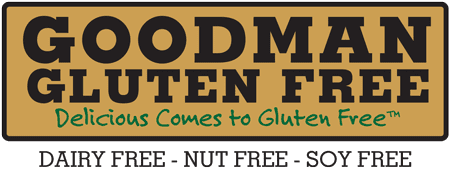If living a gluten-free lifestyle is on deck for 2020, here’s a list of 20 things that will help you begin your new gluten-free diet.
- Understand Why – This is a big one. Some choose to eat gluten free as a dietary preference, while others with celiac disease have a very serious autoimmune disease that requires gluten-free eating to avoid consequential health complications. Understanding the reasons why you are beginning a gluten-free lifestyle will
 determine to what extent you need to tackle the remaining gluten-free tips.
determine to what extent you need to tackle the remaining gluten-free tips. - Wheat by Another Name – Wheat and gluten are synonymous, but have you heard of kamut? Not only are there are different varieties of wheat, the way wheat is milled or processed can also affect how it is listed as an ingredient. Knowing the different names of wheat will allow you to identify gluten in your food. Look for durum, einkorn, emmer, kamut, spelt, and these variations from the Mayo Clinic:
-
- Enriched flour with added vitamins and minerals
- Farina, milled wheat usually used in hot cereals
- Graham flour, a course whole-wheat flour
- Self-rising flour, also called phosphate flour
- Semolina, the part of milled wheat used in pasta and couscous
- Common Culprits – Familiarize yourself with common, and a few surprise, sources of gluten with this handy list from the Celiac Disease Foundation.

- Review Your Medications – While the vast majority of oral prescription drugs do not contain gluten, consulting with your physician is a good idea. If you’re unfamiliar with reading medication labels, the FDA’s Medications and Gluten is a useful tool. You can search over 90,000 prescription and non-prescription labels here.
- Yes Please – Humans naturally tend to remember negative things more easily than positive. A small printout of naturally gluten-free foods will help you remember the large variety of food still at your disposal. Click here for a list of gluten-free fresh food and grains.
 Learn Labels – Learning to read labels can feel daunting, but there are plenty of great resources to help you become an expert. Start your education here with GFF Magazine’s The Fine Print.
Learn Labels – Learning to read labels can feel daunting, but there are plenty of great resources to help you become an expert. Start your education here with GFF Magazine’s The Fine Print.- Replace Condiments – Open condiment containers are common culprits for gluten contamination. Do yourself a favor and start fresh.
- Deep Clean – Ensure you’re starting with a clean slate, or kitchen to be specific, with a top-to-bottom kitchen clean. P.S. Don’t forget the oven.
- Personal Toaster – Since there’s no way to thoroughly clean a used toaster, and sharing it is a disaster waiting to happen, a dedicated gluten-free toaster will ensure your morning toast is always safe and delicious.
- Utensil Swap – Plastic and wood serving utensils can harbor hidden gluten. Choose either new plastic utensils or opt for stainless steel options instead.
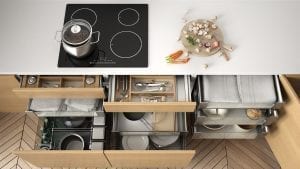
- Pots and Pans – Nonstick pots and pans can become chipped or scratched, which then become places for gluten to hide. Replace or avoid using any scratched or worn nonstick cooking ware.
- Stock Your Pantry – This may seem obvious; however, it’s an important step to ensure that you have plenty of gluten-free options at your fingertips when hunger strikes. Plus, it’s a great excuse to clean out expired items and take stock of what you already have that is appropriate for your new gluten-free lifestyle. Chef Jamie Oliver provides a list of gluten-free essentials here.
- Educate Your family – Culturally, people are more aware of gluten free, however they may not understand the ins
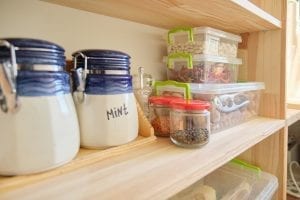 and outs of a gluten-free diet. It’s up to you how your household will navigate your gluten-free eating. Clear communication of your expectations will help set the right tone going forward.
and outs of a gluten-free diet. It’s up to you how your household will navigate your gluten-free eating. Clear communication of your expectations will help set the right tone going forward. - Top Cookbook – To get started, find one gluten-free cookbook to help you expand your cooking repertoire. If you’re new to grains like quinoa, amaranth and millet, look for a cookbook that explains flavor profiles and cooking methods. As your comfort level with gluten-free cooking increases, so will your cookbook collection. To get started, here’s Gluten Free Living’s list of the top 10 gluten-free cookbooks.
- Comfort Foods – Speaking of recipes, eating gluten-free doesn’t have to mean giving up your favorite foods. Gluten-free pasta, gluten-free bread, and gluten-free flours are all
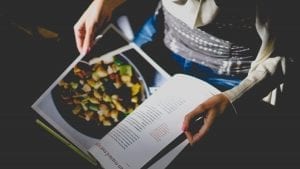 excellent alternatives to their wheat counterparts. Converting several of your favorite meals or recipes to gluten free will keep comfort food on the menu.
excellent alternatives to their wheat counterparts. Converting several of your favorite meals or recipes to gluten free will keep comfort food on the menu. - Restaurant Resource – Before you assume eating out isn’t an option, take a look at the National Celiac Association’s online gluten-free restaurant search and map. More and more gluten-free restaurants are opening every day.
- Find Support – Having support as you make this transition will help you navigate the twists and turns of a new lifestyle. From online, to in-person groups, there are many resources out there.
- Travel Tips – Travel can
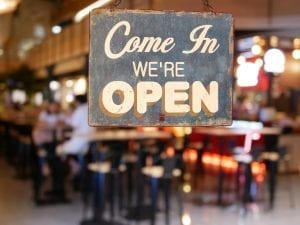 be stressful, but it can also be a wonderful opportunity to explore and sample exiting new gluten-free options. Ahead of business travel, check out your gluten-free options, and for vacations, consider choosing a gluten-free friendly location.
be stressful, but it can also be a wonderful opportunity to explore and sample exiting new gluten-free options. Ahead of business travel, check out your gluten-free options, and for vacations, consider choosing a gluten-free friendly location. - Tracking Tool – With so many changes, it can be hard to identify when a new ingredient or restaurant doesn’t sit well with you. Keeping a food diary, will allow you to hone in on problematic ingredients or products and proves a useful resource when consulting with your physician.
- Mindset – Missteps will likely be made. Afterall, no one is perfect. Staying focused on what you can eat, rather than what you can’t, and understanding that your gluten-free lifestyle is a journey, will help keep you positive as you adjust to your new way of eating.
Lastly, you know you best. Be kind to yourself. Whether that means a walk in the park, reading a good book, or a  gluten-free cupcake with dinner, your gluten-free lifestyle journey is unique to you.
gluten-free cupcake with dinner, your gluten-free lifestyle journey is unique to you.
